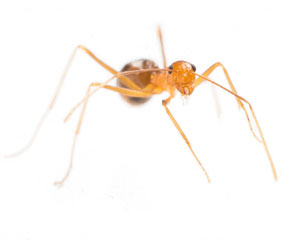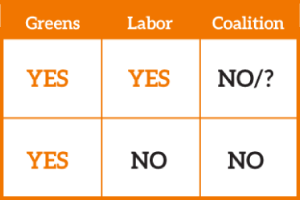
Remember former environment minister Greg Hunt’s plan to cull 2 million cats by 2020? The Coalition Government attracted plenty of attention for its aggressive stance on feral cats?
We now have a new environment minister, Josh Frydenberg, and while the Coalition rated poorly on our pre-election survey we’re hoping he will make headlines by championing solutions to a wide range of invasive species threats.
Feral cats
One Coalition commitment made during the federal election was to eradicate cats from five offshore islands – French Island in Victoria, Kangaroo Island in South Australia, Bruny Island in Tasmania, Christmas and Dirk Hartog islands in Western Australia.
Half a million dollars each has been promised for initial work on Bruny and Kangaroo islands.
Apart from Dirk Hartog Island all of these islands are inhabited by people, so strong community support and long-term determination will be essential for success.
The plan is part of the Coalition’s strategy to ‘Protect Australia’s Threatened Species’, the key component of which is to reverse the trend towards extinction of 20 priority birds, 20 priority mammals and 30 priority plants.
While there is sound science behind most of the government’s action on feral cats and parts of the threatened species strategy, the government needs to show its commitment by funding these actions. Currently, funding is scarce. The headline target to cull 2 million feral cats should be replaced by one that is ecologically meaningful rather than on numbers to kill.
Invasive Species Solutions
A stand-out commitment from the Coalition came in the form of a commitment for five years funding for the Centre for Invasive Species Solutions, the independent successor to the well-regarded Invasive Animals Cooperative Research Centre.
This promise – $20 million over five years – guarantees much-needed funds for ongoing research into feral animals.
Another election commitment to keep an eye on is a promise to review the priorities of the $142 million National Environmental Science Program. It will be important for both these programs to prioritise research on all invasive species, with a strong focus on prevention. Environmental weeds and invasive ants are two priority areas in need of a concentrated research focus.
Yellow crazy ants funding falls short
Importantly, $7.5 million in new funds was promised to support the eradication of yellow crazy ants from the Cairns and Kuranda regions. The funding arrived just in time and has already allowed helicopter baiting to recommence this month.
However, including the $3 million committed by the Queensland Government, there remains a $4.5 million shortfall over the next three years.
Yellow crazy ants, if not eradicated, are set to transform the World Heritage listed Wet Tropics rainforests forever. When the acid-spraying ants form super colonies they kill much of the insect life, and many small birds, lizards and mammals.
If not eradicated, they could wipe out the Kuranda tree frog and further endanger the cassowary, among many others.
Now that the federal election is over we are urging both the Queensland and federal governments to urgently sit down and come up with the missing funds.
Joyce to back environmental biosecurity?
Under the Coalition (as it would have been with Labor) environmental biosecurity remains second fiddle in the agriculture portfolio, but there are promising signs.
Deputy Prime Minister, Barnaby Joyce, who retains the agriculture and water resources portfolio, has promised to make an environmental biosecurity statement. His government’s response to the 2015 Senate inquiry into environmental biosecurity is due soon.
The 2015 Agriculture Competitiveness White Paper and its $4 billion was a centrepiece of the Coalition’s rural-based election commitments. It mentions environmental biosecurity. So far $1.3 million has been promised to ‘build the skills and capabilities amongst landholders and key agricultural and industry organisations to undertake detection, early intervention and management’ of invasive ants, a commitment aimed at supporting community efforts to control yellow crazy ants. We are still trying to work out what this means in practice.
While Barnaby Joyce has a track-record as being the tough guy for agricultural biosecurity, he now has the chance to prove himself equally tough for environmental biosecurity. This is where the environment minister can play an important role.
We need a champion
For invasive species to figure more prominently in Australia’s debate about how we protect our native plants and animals and what our biosecurity system protects we need a proactive environment minister.
It remains to be seen if Josh Frydenberg will take a more expansive approach than his predecessor, one that tackles the next generation of invasive species instead of focusing only on a few of the worst cases already causing damage.




